Excerpts from Jim Conrad's
Naturalist Newsletter
from the January 18, 2019 Newsletter issued from Rancho Regensis north of Valladolid, Yucatán, MÉXICO;
elevation ~40m (~130 ft), N~20.876°, W~88.170°
EK BALAM, THE PLANT
Thirty-four species of the genus Croton, in the Spurge/Euphorbia Family, are listed for the Yucatan Peninsula, and probably at least a dozen might occur in our area, maybe many more. But their taxonomy is a mess and they're hard to differentiate. So far I've only been fairly certain about one of the woody species, which I call the Tree Croton, whose page is at www.backyardnature.net/mexnat/croton2.htm
Now I'm maybe 80% sure of a very common Croton species that often turns up here along fencerows and livestock trails through the woods. A typical plant is shown below:

Crotons bear unisexual flowers, and our fence species bears racemes of either all male or all female flowers, so the plants are "dioecious." Below, you can see some young racemes of male flowers
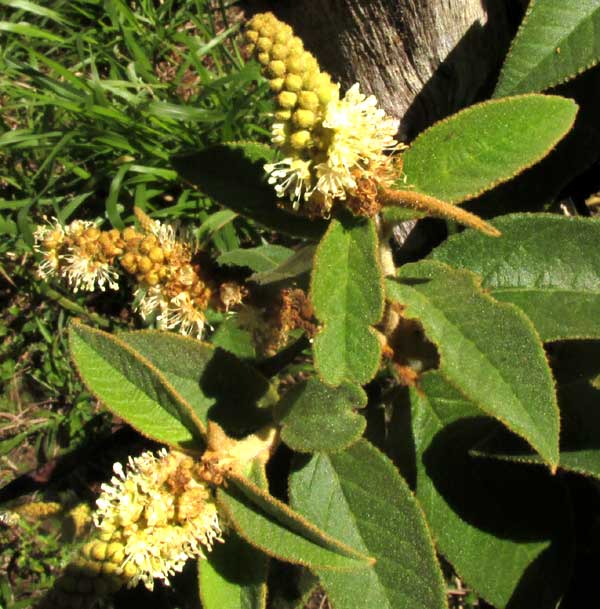
Already with that picture you can see what's true of most crotons: They're hairy. A male flower with numerous white stamens issuing from it wide open, hairy calyx is shown below:
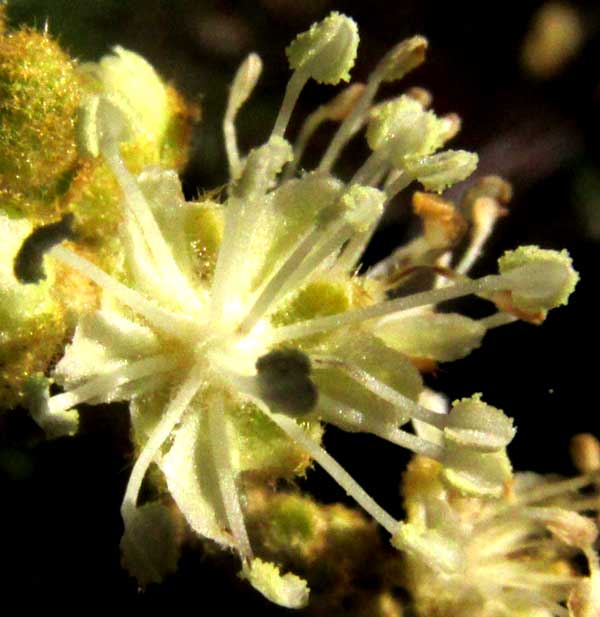
A cluster of very different-looking young female flowers is shown below:
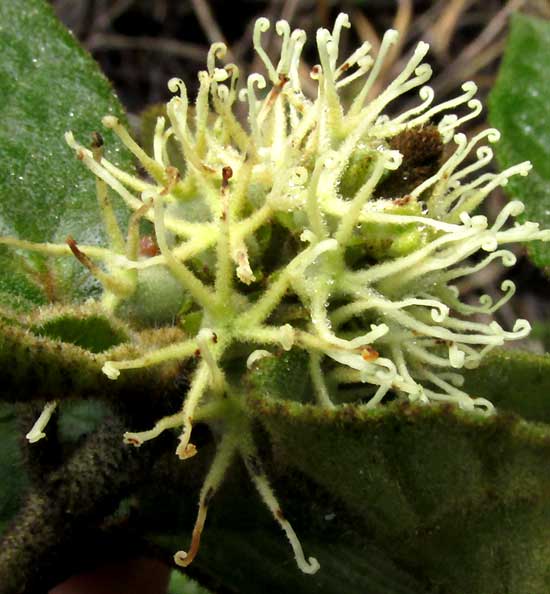
The white items are styles emerging from small, fuzzy-white ovaries. Each style ends in a curled stigma. A cluster of more mature ovaries with their styles shriveling and turning brown is seen below:
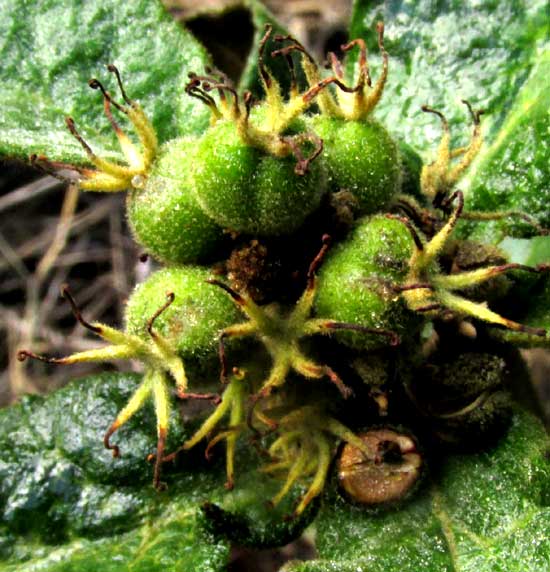
The white-woolly undersurface of a leaf is shown below:
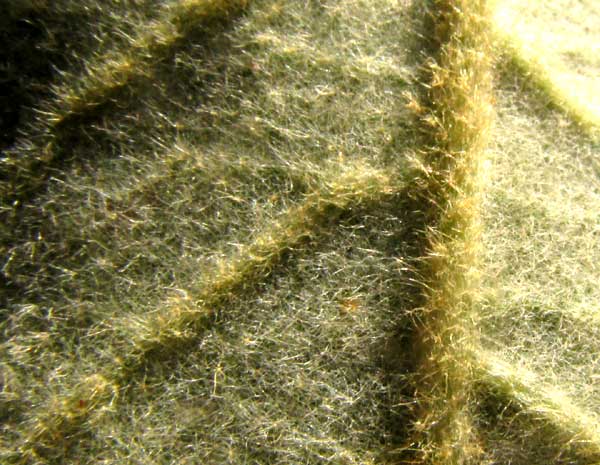
When croton leaves are plucked from a stem, usually a noticeable amount of clear or colored liquid issues from the break. In this species, the sap is orangish, as shown below:

That picture also shows that the plants' hairiness is largely composed of branched or "stellate" hairs. Also, leaf bases in this species project back toward the stem a little, so they're "shallowly cordate." The sinus between the two back-pointing lobes is narrow, and forked veins radiate from the juncture of the blade with the petiole.
All these details appear to lead to the species CROTON CORTESIANUS, which has no common name in English. My friend Juan calls it Oregano Kaash, meaning "Wild Oregano." However, he says that people here don't use Croton cortesianus as a spice, as they do with another species they call by that name.
In certain parts of the rancho's forest where livestock graze, many trees are dying because their bark is being eaten off, and the herbaceous layer has been almost removed. However, wherever enough sunlight breaks through, large, single-species patches of Croton cortesianus are left untouched by the animals. I sampled a leaf and didn't find it particularly bitter, so livestock avoids this species for some reason other than its bitterness. If this overgrazing continues, in a few years we may have large areas of pure Croton cortesianus.
Croton CORTESIANUS is fairly common in most of Mexico, except the northwest, and extends southward into Costa Rica.